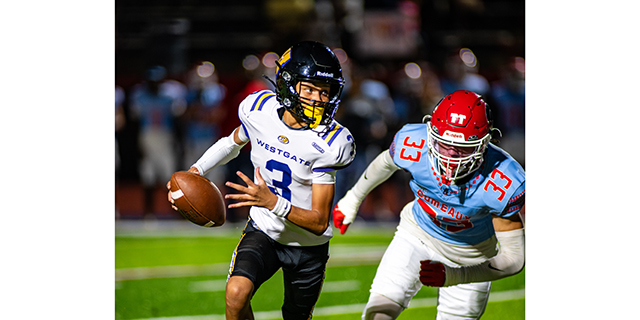Thanks to the cooks
Published 6:00 am Wednesday, November 16, 2016

- Keep the traditions or try new recipes. The result is the same when the heart is thankful and expressed to loved ones.
Traditions can become burdens, share the load
Family traditions rate high in the Teche Area. Every family has one whether or not they implement them at Thanksgiving. With cousins and grandparents spread from north to south Louisiana, the Branton family went to Jena in central Louisiana for Thanksgiving more than 40 years.
Food was delicious, often items only cooked at Thanksgiving and Christmas. Candied sweet potatoes by Gayle “Mimi” Baker Mann never tasted like any others. Probably because she cooked them slow and in a lot of sugar. Her butterbeans were pretty tasty, too, though they really weren’t anything special — unless it was her homemade chili sauce on top.
When she was younger, and well into her 70s, Mimi would break open a hard brown coconut and hand grate it for topping the frosting of her coconut cake, a favorite of her first born granddaughter.
Both ham and turkey were served along with cornbread dressing. Not being from the Spanish or French traditions of Cajun country, the Arkansas variety was the brand that served the whole family, including those traveling from Ruston to Jena for the four hours of indulging, watching football, catnaps and hugs until next year.
Card games and dominoes were the icebreaker blending children and adults of all ages. Laughter was plentiful, until after dinner when bellies were too full to jiggle like a bowl full of jelly.
Times change, and traditions pass, but memories remain. This year a new tradition is possible, something long desired, serving less fortunate who are truly grateful for the meal.
Turning in the Turkey
Even though turkey may be synonymous with Thanksgiving, hosts and hostesses should not shy away from serving something different. In fact, turkey may not even have been on the menu for the first Thanksgiving. Some people prefer to buck Thanksgiving tradition from time to time and divert focus from the golden gobbler.
Thanksgiving dates back to New England in November 1621, when newly arrived Pilgrims and the Wampanoag Indians gathered for an autumn harvest celebration. It’s reported that pilgrims went on a “fowling” mission in preparation for the three-day feast.
Although wild turkey was plentiful in the region, ducks, geese, passenger pigeons, and swans were commonly consumed. Historians at the Smithsonian say documents refer to wildfowl and venison as foods appearing at the first Thanksgiving, but turkey was not mentioned.
Home chefs can take a cue from those first pilgrims and choose less traditional offerings this Thanksgiving. The following are some ideas that are reminiscent of the first Thanksgiving.
Food for Thought
Thanksgiving goose? This may have been a more likely option at the first Thanksgiving than the turkey enjoyed today. If the flavor is more palatable, don’t hesitate to select another bird to grace the Thanksgiving table, such as a goose or even a chicken.
Some people find turkey meat to be too dry, despite all of the different preparation methods. Chicken or goose may be more well-received and just as versatile.
Don’t overlook the possibility of serving fish and other seafood. Colonists and the Wampanoag probably ate eel, lobster, clams, and mussels. Fish can be dried, smoked and preserved.
Replace wheat-based recipes with those made from cornmeal, as maize was more likely available during colonial time than wheat.
Forests provided chestnuts, beechnuts and walnuts, so a platter of nuts paired with cheese or fruit also can make a welcome addition to the table. Nuts also can be ground and used in baked goods or flavoring for Thanksgiving desserts.
Switch Up the Style
Pumpkin and squash were plentiful in colonial times and this is why these gourds are often included in Thanksgiving meals and decor. The flesh of a pumpkin or squash can be turned into casseroles or used to make quiche.
A traditional Thanksgiving meal for the early settlers would not have included potatoes. White potatoes originated in South America and sweet potatoes in the Caribbean. At the time of the first Thanksgiving, these would not yet have been introduced, as white potato patches in North America were not established in the region until 1719, according to the potato resource Potato Goodness.
Because colonists did not have wheat flour and butter to make flaky tart crusts, pumpkin pie was not on the first Thanksgiving menu. In lieu of pumpkin pie, hosts can experiment with moist loaf breads or muffins made with pumpkin.
The average Thanksgiving dinner table today looks quite different from the one the Wampanoag Indians and Pilgrims gathered around centuries ago. Families can stick closer to history and tailor their meals for a touch of something different this year.
Make Thanksgiving Healthier
Thanksgiving is not often associated with healthy eating. From candied sweet potatoes to sausage-filled stuffing, Thanksgiving dinner is full of flavor, but also full of calories and fat. The Calorie Control Council claims the average American will consume more than 4,500 calories on Thanksgiving Day.
Even if you won’t come close to consuming 4,500 calories this Thanksgiving, you may want to take the following steps to make your Thanksgiving feast healthier.
CREATE A CALORIE DEFICIT. A key to maintaining a healthy weight or losing a few pounds is to exercise more and eat less, a strategy that can be employed during the holiday season. Such a regimen will improve your metabolism, and your body will be better at handling the extra caloric load of Thanksgiving without packing on the pounds. Once Thanksgiving dinner is over, go for a walk around the neighborhood. This can facilitate digestion and burn even more calories.
PRACTICE PORTION CONTROL. It’s not necessarily what you eat on Thanksgiving, but how much you eat that makes the meal so unhealthy. The American Heart Association advises holiday celebrants to practice portion control. In addition, eat fewer high-calorie foods and fill up on lighter fare, such as vegetables and lean turkey. This way you get to enjoy a taste of everything without overdoing it.
CUT DOWN ON BREAD. Bread can be both delicious and filling. But bread is often full of empty calories, particularly if you’re eating refined, white breads. Opt for less bread in stuffing recipes and incorporate more celery, raisins, cranberries, and apples to give bulk to the stuffing. Choose whole-grain rolls and crackers to complement the main course.
CHOOSE HEALTHIER INGREDIENTS. Substitute low-fat milk or stocks for cream and whole milk in recipes. Include steamed cauliflower in mashed potatoes recipes to make them more filling and healthier. Sweet potatoes tend to be sweet enough without the need for butter, sugar and marshmallows. Skim the fat and oils out of gravies and sauces before serving. Olive oil is a healthy fat that can be used in place of butter or margarine.
FOCUS ON FRUIT FOR DESSERT. Thanksgiving dinner is usually followed with a decadent spread of desserts. These pies and cakes can be delicious but laden with calories. In lieu of traditional fare, serve poached fruits sprinkled with a little brown sugar and oatmeal for a tasty and healthy dessert. Low-fat sherbet, fresh fruit salad and rice pudding also make for healthier desserts.
CHOOSE HEALTHY BEVERAGES. It’s easy to overlook the calorie content of beverages. Whenever possible, choose water or a low-calorie drink. Children can sip on diluted apple juice. Be mindful of how many alcoholic beverages you consume. Spirits can be 100 calories per serving and are high in sugar.
Enjoy your Thanksgiving week and remember to take pictures and make memories. They will last a lifetime.





